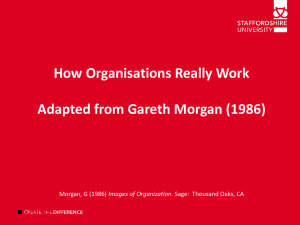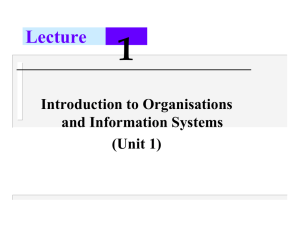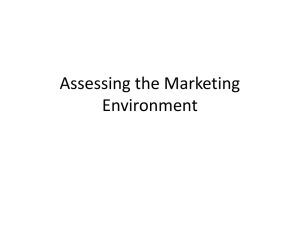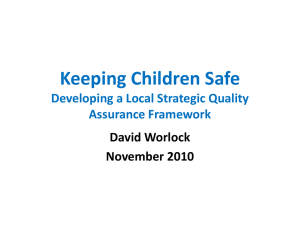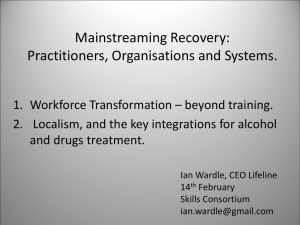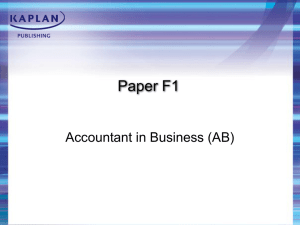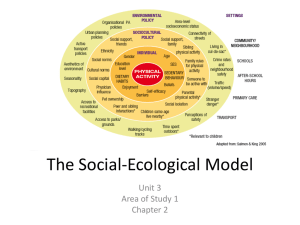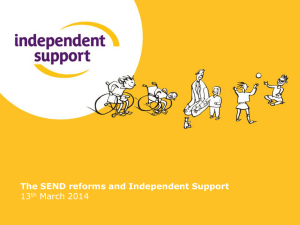Mechanisms for Developing Effective Teamwork in Organisations
advertisement
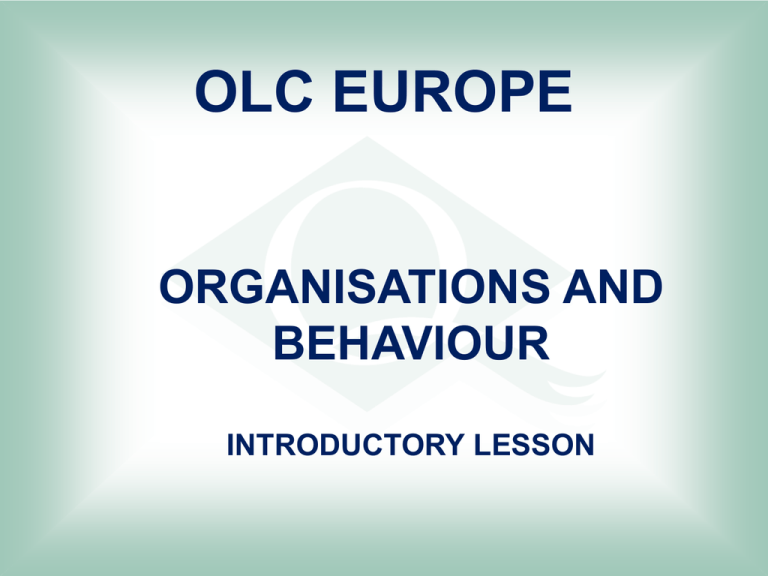
OLC EUROPE ORGANISATIONS AND BEHAVIOUR INTRODUCTORY LESSON UNIT ABSTRACT Unit focuses on the behaviour of individuals and groups within organisations, exploring the links between the structure and culture of organisations and how these interact and influence the behaviour of the workforce. The structure of a large multi-national company will be very different from a small local business. The way in which an organisation structures and organises its workforce will impact on the culture that develops within the organisation with the emerging system of shared values and beliefs determining and shaping the accepted patterns of behaviour of the organisation’s workforce. The structure and culture of an organisation are key factors which contribute to motivating the workforce at all levels of the organisation. The Japanese for example were instrumental in developing a culture of ‘continuous improvement through teamwork’ in their manufacturing industry. This culture has now been exported around the world and encapsulates the way in which structure and culture contribute to patterns of behaviour in the workplace. Relation between organisational structure and culture (Content) Types of organisation and associated structures: functional, product-based, geographically based, multi-functional and multi-divisional structures, matrix, centralisation and decentralisation; organisational charts; spans of control; internal and external network structures; flexible working Organisational culture: classification of organisational culture – power culture, role culture, task culture, person culture; cultural norms and symbols; values and beliefs; development of organisational culture Diagnosing behavioural problems: concepts; principles; perspectives; methodology Perception: definition; perceptual selection; perception and work behaviour; attitude; ability and aptitude; intelligence Significance and nature of individual differences: self and self-image; personality and work behaviour; conflict Individual behaviour at work: personality, traits and types; its relevance in understanding self and others. Different Approaches to Management and Leadership (Content) Development of management thought: scientific management; classical administration; bureaucracy; human relations approach; systems approach; contingency approach. Functions of management: planning; organising; commanding; coordinating; controlling. Managerial roles: interpersonal; informational; decisional Nature of managerial authority: power; authority; responsibility; delegation; conflict. Frames of reference for leadership activities: opportunist; diplomat; technician; achiever; strategist; magician; pluralistic; transformational; change Motivational Theories in Organisations (Content) Motivation theories: Maslow’s Hierarchy of Needs; Herzberg’s Motivation – Hygiene theory; McGregor’s Theory X and Y; Vroom and Expectancy theories; Maccoby, McCrae and Costa – personality dimensions. Motivation and performance: rewards and incentives; motivation and managers; monetary and non-monetary rewards Leadership: leadership in organisations; managers and leaders; leadership traits; management style; contingency approach; leadership and organisational culture Leadership and successful change in organisations: pluralistic; transformational; communications; conflict Mechanisms for Developing Effective Teamwork in Organisations (Content) Teams and team building: groups and teams; informal and formal groups; purpose of teams; selecting team members; team roles; Belbin’s theory; stages in team development; team building; team identity; team loyalty; commitment to shared beliefs; multi-disciplinary teams. Team dynamics: group norms; decision-making behaviour; dysfunctional teams; cohesiveness. Impact of technology on team functioning: technology; communication; change; networks and virtual teams; global and cross-cultural teams LEARNING OUTCOMES • Understand the relationship between organisational structure and culture • Understand different approaches to management and leadership • Understand ways of using motivational theories in organisations • Understand mechanisms for developing effective teamwork in organisations RELATIONSHIP BETWEEN ORGANISATIONAL STRUCTURE AND CULTURE (ASSESSMENT CRITERIA) • Compare and contrast different organisational structures and cultures • Explain how the relationship between an organisation’s structure and culture can impact on the performance of the business • Discuss the factors which influence individual behaviour at work DIFFERENT APPROACHES TO MANAGEMENT AND LEADERSHIP (ASSESSMENT CRITERIA) • Compare the effectiveness of different leadership styles in different organisations • Explain how organisational theory underpins the practice of management • Evaluate the different approaches to management used by different organisations USING MOTIVATIONAL THEORIES IN ORGANSATIONS (ASSESSMENT CRITERIA) • Discuss the impact that different leadership styles may have on motivation in organisations in periods of change. • Compare the application of different motivational theories within the organisation • Evaluate the usefulness of a motivation theory for managers MECHANISMS FOR DEVELOPING EFFECTIVE TEAMWORK (ASSESSMENT CRITERIA) • Explain the nature of groups and group behaviour within organisations • Discuss factors that may promote or inhibit the development of effective teamwork in organisations • Evacuate the impact of technology on team functioning within a given organisation THANK YOU FOR YOUR TIME THE END
